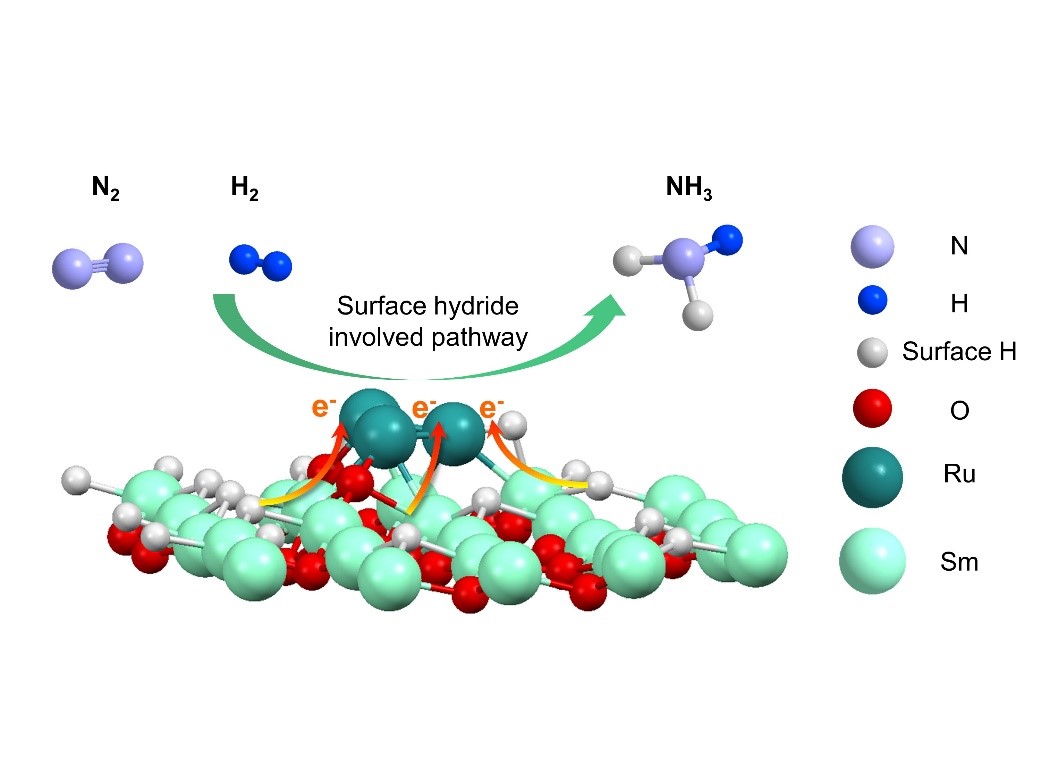Recently, a research team led by Prof. CHEN Ping, Associate Prof. LIU Lin from the Dalian Institute of Chemical Physics (DICP) of the Chinese Academy of Sciences (CAS) and Associate Prof. WU Anan from Xiamen University found that samarium hydride (Sm−H) species, in situ generated on the surface of Ru clusters/Sm2O3 catalyst under reaction conditions, could work synergistically to enhance the catalytic activity of Ru clusters for ammonia synthesis.

Schematic illustrations of the synergistic effect of surface hydride species and Ru clusters for catalytic ammonia synthesis reaction (Image by ZHANG Xilun)
Ammonia is an important chemical for synthesized fertilizers traditionally and for a potential energy vector. Under the background of national "double carbon" goal, development of green ammonia synthesis technology based on renewable energy has attracted increasing attention. Catalysts play pivotal role in ammonia synthesis and determine the efficiency of this process.
Here, sub-nanometer Ru clusters on Sm2O3 (Ru clusters/Sm2O3) was successfully synthesized and investigated as catalyst for ammonia synthesis. Under mild reaction conditions, the catalyst possesses excellent activity, high stability, high thermal stability and high water-tolerant stability. Experimental and theoretical results reveal that Sm2O3 featuring surface Sm−H species can regulate the electronic structure of Ru clusters, making the catalyst active for hydrogen and nitrogen activation. Most importantly, the Sm−H species on the Ru/Sm2O3 catalyst can directly participate in the formation of ammonia, rendering the catalyst exceptionally active in ammonia synthesis. The discovery of the synergy role of surface hydride species can deepen the molecular level understanding of active sites and reaction mechanism of Ru-based catalysts during ammonia synthesis process, which also provides opportunity for rational design of efficient Ru-based ammonia synthesis catalysts under mild conditions.
This study was recently published in ACS catalysis on Feb. 18. This work was supported by National Natural Science Foundation of China, Dalian National Laboratory for Clean Energy and K. C. Wong Education Foundation. (Text by ZHANG Xilun and LIU Lin).
Article link:https://doi.org/10.1021/acscatal.1c05985

